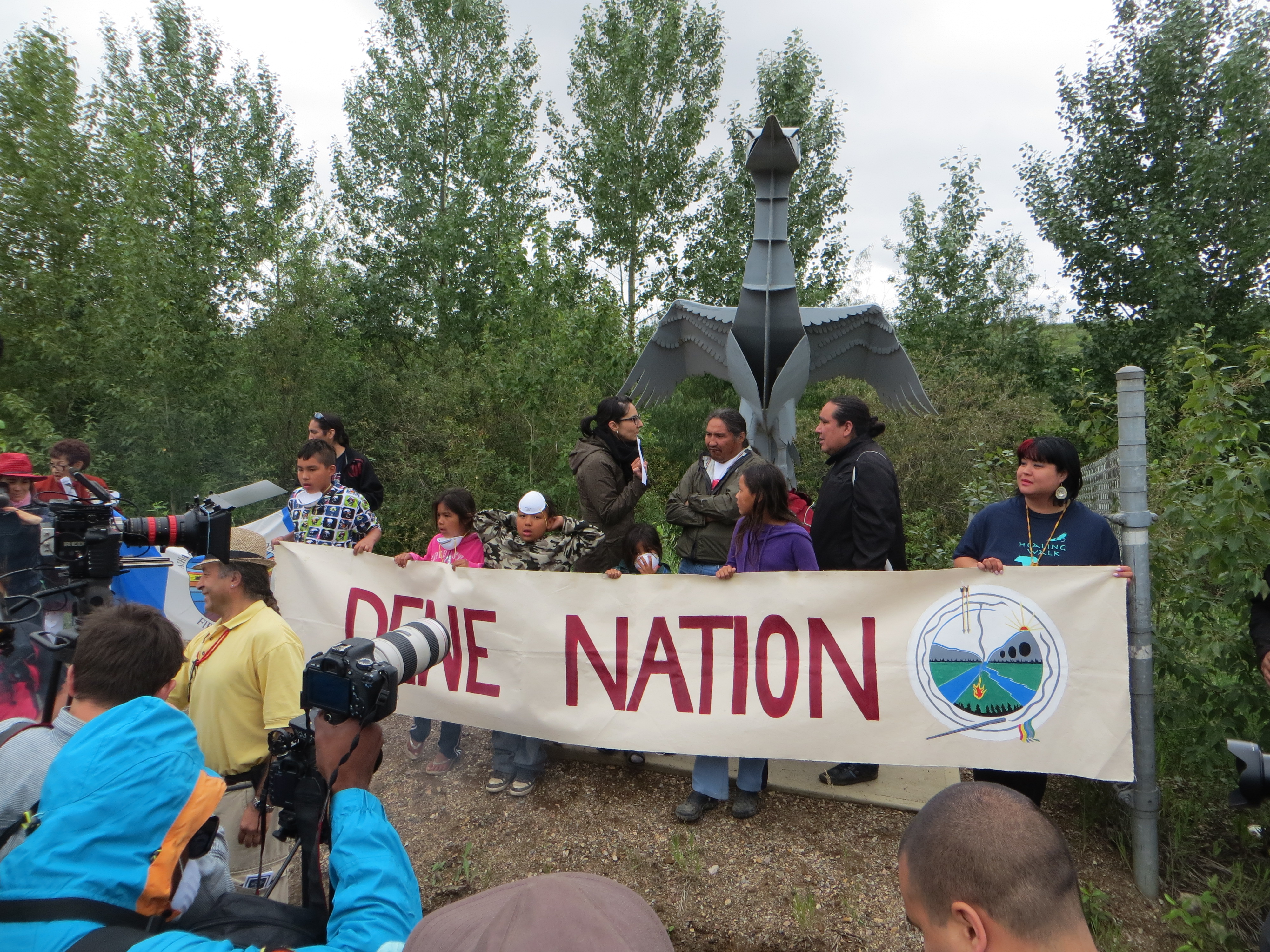Browse "Communities & Sociology"
-
Article
Culture
Culture, a term used by social scientists, is also widely used in popular speech. It apparently arose first in the Old French of the Middle Ages to indicate a religious cult, or religious worship or ceremony. The verb culturer meant "working the soil."
"https://development.thecanadianencyclopedia.ca/images/tce_placeholder.jpg?v=e9dca980c9bdb3aa11e832e7ea94f5d9" // resources/views/front/categories/view.blade.php
https://development.thecanadianencyclopedia.ca/images/tce_placeholder.jpg?v=e9dca980c9bdb3aa11e832e7ea94f5d9
-
Article
CUPW Postal Strikes
The Canadian Union of Postal Workers (CUPW) is a labour union that represents over 55,000 members across Canada (2024). Members of the CUPW include Canada Post employees as well as couriers, vehicle mechanics, and other workers in the private sector. (See also Postal System.) Since 1965 the CUPW (previously Canadian Postal Employees Association) has represented members in numerous strikes, walkouts and lockouts over several complex labour issues. (See also Strikes and Lockouts.)
"https://d2ttikhf7xbzbs.cloudfront.net/TCE_placeholder.png" // resources/views/front/categories/view.blade.php
https://d2ttikhf7xbzbs.cloudfront.net/TCE_placeholder.png
-
Article
Curriculum Development
Curriculum development in Canada has gone from teaching survival skills, both practical and cultural, to emphasizing self-fulfillment and standards-based achievements. This evolution mirrors that which has occurred in other developed countries, namely in Europe.
"https://d2ttikhf7xbzbs.cloudfront.net/media/media/17059a5d-52bc-4699-a223-1ee3ca4ec8bf.jpg" // resources/views/front/categories/view.blade.php
https://d2ttikhf7xbzbs.cloudfront.net/media/media/17059a5d-52bc-4699-a223-1ee3ca4ec8bf.jpg
-
Article
CUSO International
CUSO International (formerly Canadian University Services Overseas), is a nongovernment international development organization best known for placing skilled Canadians in 2-year postings to provide technical assistance in emerging nations.
"https://development.thecanadianencyclopedia.ca/images/tce_placeholder.jpg?v=e9dca980c9bdb3aa11e832e7ea94f5d9" // resources/views/front/categories/view.blade.php
https://development.thecanadianencyclopedia.ca/images/tce_placeholder.jpg?v=e9dca980c9bdb3aa11e832e7ea94f5d9
-
Article
Czech Music in Canada
Perhaps the first musically important immigrant to Canada from what later was to be known as Czechoslovakia was Wilhelm Labitzky (violinist, b Becov 1829, d Toronto 1871; son of Joseph Labitzky, 'the waltz king of Bohemia').
"https://development.thecanadianencyclopedia.ca/images/tce_placeholder.jpg?v=e9dca980c9bdb3aa11e832e7ea94f5d9" // resources/views/front/categories/view.blade.php
https://development.thecanadianencyclopedia.ca/images/tce_placeholder.jpg?v=e9dca980c9bdb3aa11e832e7ea94f5d9
-
Article
Day Care
The licensed or approved care of young children, for all or part of the day, outside the children's own home. The 2 most common types of day care are centre care and family day care.
"https://development.thecanadianencyclopedia.ca/images/tce_placeholder.jpg?v=e9dca980c9bdb3aa11e832e7ea94f5d9" // resources/views/front/categories/view.blade.php
https://development.thecanadianencyclopedia.ca/images/tce_placeholder.jpg?v=e9dca980c9bdb3aa11e832e7ea94f5d9
-
Article
Deaf Culture
It is the sign of a people's maturity when they begin to study their own history, language and culture.
"https://development.thecanadianencyclopedia.ca/images/tce_placeholder.jpg?v=e9dca980c9bdb3aa11e832e7ea94f5d9" // resources/views/front/categories/view.blade.php
https://development.thecanadianencyclopedia.ca/images/tce_placeholder.jpg?v=e9dca980c9bdb3aa11e832e7ea94f5d9
-
Article
Death
For centuries the law has accepted the cessation of heartbeat and respiration as the determination of death, but now the heart can be removed, the breathing stopped and blood pumped by machines without preventing the individual's resumption of lucid consciousness.
"https://development.thecanadianencyclopedia.ca/images/tce_placeholder.jpg?v=e9dca980c9bdb3aa11e832e7ea94f5d9" // resources/views/front/categories/view.blade.php
https://development.thecanadianencyclopedia.ca/images/tce_placeholder.jpg?v=e9dca980c9bdb3aa11e832e7ea94f5d9
-
Article
Death and Dying
Death, the irreversible cessation of life, has always intrigued and frightened mankind. Every known culture has attempted to provide an explanation of its meaning; like birth or marriage it is universally considered an event of social significance, amplified by ritual and supported by institutions.
"https://development.thecanadianencyclopedia.ca/images/tce_placeholder.jpg?v=e9dca980c9bdb3aa11e832e7ea94f5d9" // resources/views/front/categories/view.blade.php
https://development.thecanadianencyclopedia.ca/images/tce_placeholder.jpg?v=e9dca980c9bdb3aa11e832e7ea94f5d9
-
Article
Canadian Census
A census is a count of a population in a specific region. In Canada, there are two types of censuses: the Census of Population and the Census of Agriculture. Both are conducted every five years by Statistics Canada, a department of the federal government. The larger of the two censuses, the Census of Population, gathers demographic information. This information includes where people live, as well as their age, sex, marital status and ethnic origin. The government uses this information to establish electoral boundaries, to make federal transfer payments (money given to the provinces) and to monitor various social programs and policies (e.g. Canada Pension Plan, health care and education). In addition, the data is available to non-governmental organizations and to the general public. Some older data is available to individuals interested in genealogical research.
"https://d2ttikhf7xbzbs.cloudfront.net/media/media/ad69249b-5ff2-49d9-8707-44ae93e5b977.jpg" // resources/views/front/categories/view.blade.php
https://d2ttikhf7xbzbs.cloudfront.net/media/media/ad69249b-5ff2-49d9-8707-44ae93e5b977.jpg
-
Article
Demography
Most demographers, however, devote themselves to studies that go beyond this core; eg, by questioning why purely demographic phenomena (fertility, mortality, nuptiality, age structure) vary and what social consequences may result from these variations.
"https://development.thecanadianencyclopedia.ca/images/tce_placeholder.jpg?v=e9dca980c9bdb3aa11e832e7ea94f5d9" // resources/views/front/categories/view.blade.php
https://development.thecanadianencyclopedia.ca/images/tce_placeholder.jpg?v=e9dca980c9bdb3aa11e832e7ea94f5d9
-
Article
Dene Games
Dene games are tests of physical and mental skill that were originally used by the Dene (northern Athabascan peoples) to prepare for the hunting and fishing seasons, and to provide entertainment. Today, Dene games (e.g., Finger Pull and Hand Games) are still played in many schools and community centres in the North as a means of preserving tradition and culture. As competitive sports, Dene games are also featured in various national and international athletic competitions, including the Arctic Winter Games.
"https://d2ttikhf7xbzbs.cloudfront.net/media/media/ef59eb2c-6b7b-4d8d-9af4-96e54bad8220.jpg" // resources/views/front/categories/view.blade.php
https://d2ttikhf7xbzbs.cloudfront.net/media/media/ef59eb2c-6b7b-4d8d-9af4-96e54bad8220.jpg
-
Article
Dene Nation (organization)
Established in 1969–70 as the Indian Brotherhood of the Northwest Territories, the Dene Nation (renamed in 1978) is the political organization that represents the Dene, or northern Athabaskan-speaking peoples and their descendants, of Denendeh, which includes the Mackenzie River Valley and the Barren Grounds in the Northwest Territories, in the settlement of outstanding land and governance issues with the Government of Canada.
"https://d2ttikhf7xbzbs.cloudfront.net/media/media/bd07ff31-bf6a-42a5-9636-8159f6b0c9ab.jpg" // resources/views/front/categories/view.blade.php
https://d2ttikhf7xbzbs.cloudfront.net/media/media/bd07ff31-bf6a-42a5-9636-8159f6b0c9ab.jpg
-
Article
Disability Rights Movement in Canada
The Canadian disability rights movement arose in the latter half of the 20th century. It includes multiple social movements that take a similar but distinct approach advocating civil rights for almost four million people with physical, sensory and cognitive impairments — nearly 14 per cent of the Canadian population.
"https://development.thecanadianencyclopedia.ca/images/tce_placeholder.jpg?v=e9dca980c9bdb3aa11e832e7ea94f5d9" // resources/views/front/categories/view.blade.php
https://development.thecanadianencyclopedia.ca/images/tce_placeholder.jpg?v=e9dca980c9bdb3aa11e832e7ea94f5d9
-
Article
Ditidaht
Ditidaht (meaning “people along the way” or “people along the coast” in their language) is a Nuu-chah-nulth nation residing on the west coast of Vancouver Island. At present, the main permanently occupied Ditidaht village is situated in Malachan, a settlement that lies at the head of Nitinat Lake. As of October 2021, the federal government counts 775 registered members of the Ditidaht nation.
"https://development.thecanadianencyclopedia.ca/images/tce_placeholder.jpg?v=e9dca980c9bdb3aa11e832e7ea94f5d9" // resources/views/front/categories/view.blade.php
https://development.thecanadianencyclopedia.ca/images/tce_placeholder.jpg?v=e9dca980c9bdb3aa11e832e7ea94f5d9
